A Beginner's Guide To Forest Gardening
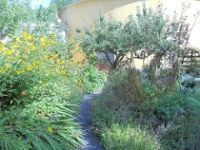
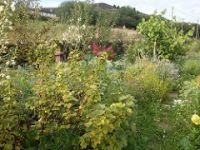 Layering in a Forest Garden
Layering in a Forest Garden
Forest gardening is all about getting a higher yield from a smaller area, while still allowing free reign to the natural processes in the system. A forest garden can help you think vertically and make the most of the space in your garden. You can create a forest garden on a very small scale, or something much more grand. The key is to think about layering the plants, so that they grow one beneath the other.
Components of Forest Gardens
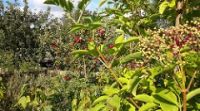 Any food forest planting scheme will begin with the trees. Choosing trees for a forest garden can be as simple as selecting a few fruit or nut bearing trees that will do well in your area. You can also choose trees for other reasons – for firewood or kindling, to fix nitrogen or as wind break, for example.
Any food forest planting scheme will begin with the trees. Choosing trees for a forest garden can be as simple as selecting a few fruit or nut bearing trees that will do well in your area. You can also choose trees for other reasons – for firewood or kindling, to fix nitrogen or as wind break, for example.
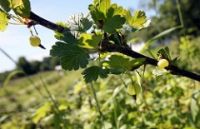 Below the trees you will have shade-loving shrubs, and around them some other fruit bushes or canes can also thrive on the forest edge. Shrubs can often provide fruits or another edible yield, and when they do not, may be chosen for their nitrogen fixing abilities, or for their flowers which attract wildlife.
Below the trees you will have shade-loving shrubs, and around them some other fruit bushes or canes can also thrive on the forest edge. Shrubs can often provide fruits or another edible yield, and when they do not, may be chosen for their nitrogen fixing abilities, or for their flowers which attract wildlife.
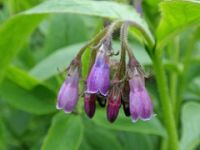 Below and around the shrubs, herbaceous plants will also provide an abundance of food. In the herbaceous layer you will also find flowers and aromatic herbs that can help fruit trees to perform at their best by attracting pollinators or by repelling pest species. You may also have vining plants climbing up through the layers.
Below and around the shrubs, herbaceous plants will also provide an abundance of food. In the herbaceous layer you will also find flowers and aromatic herbs that can help fruit trees to perform at their best by attracting pollinators or by repelling pest species. You may also have vining plants climbing up through the layers.
A ground cover layer will not only help to retain moisture for the use of the roots of other plants, it will also suppress unwanted plants, and can protect the soil.
The layers do not end there. You may have some root vegetables in the under-storey which can be harvested from below the soil. It is important to remember that beneficial fungi and bacteria living below the soil are also a crucial part of a forest garden ecosystem.